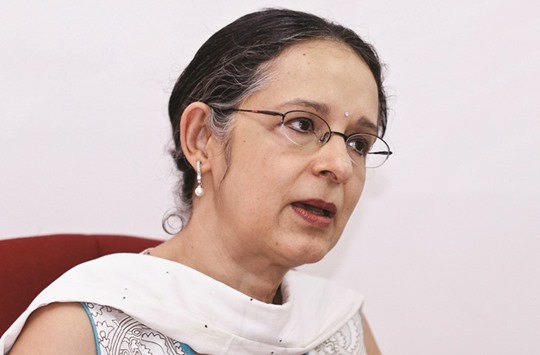The Reserve Bank of India (RBI) has scope to cut interest rates immediately given the government’s pledge to narrow the budget deficit, an adviser to the monetary authority said.
“There is room for them to move right away, though they might stick to the timetable as there isn’t much time left for the April 5 policy meeting,” said Ashima Goyal, a member of the central bank’s technical advisory panel that makes policy recommendations to Governor Raghuram Rajan. “The budget has delivered enough because they have stuck” with their fiscal consolidation plans, she said, adding that “the other big thing is that the borrowing figures have come out much lower than expected.”
In his budget speech, Finance Minister Arun Jaitley affirmed the administration’s target of narrowing the shortfall to 3.5% of gross domestic product in the year starting April 1.
Controlled spending by the government will aid the central bank’s fight against inflation, which accelerated to a 17-month high in January. Sovereign bonds have rallied last week on speculation that Rajan - who has kept rates on hold for two straight policy meetings - will add to 2015’s four interest-rate cuts.
Jaitley announced gross market borrowings of Rs6tn ($89.2bn), lower than the Rs6.8tn median estimate in a Bloomberg survey of 10 fixed-income strategists and economists earlier in the month.
The poll had forecast the deficit target to be raised to 3.7% from 3.5%.
“There is expectation of a normal monsoon after two years of drought, you have wholesale-price inflation which has been negative for more than a year, consumer-price inflation that’s less than the central bank’s target, oil prices that are expected to be soft for some time and then the global deflationary cycle continues,” Goyal said from Mumbai. “Given all these, they have some room to cut rates,” she said, predicting a reduction of 25 to 50 basis points in the benchmark repurchase rate this year.
The yield on sovereign notes due January 2026 has dropped 13 basis points from February 26 to 7.65%, prices from the central bank’s trading system show. That’s the biggest slide for benchmark 10-year debt since October. The rupee has rallied 2% to 67.2825 a dollar, putting it on course for the biggest weekly jump since May 2014.
While India’s forecast growth rate of 7.6% is the highest among emerging markets, other indicators suggest economic weakness. Bank credit growth is at its lowest level in at least 15 years, and total investment as a percentage of gross domestic product hit a 12-year low in 2015, according to the International Monetary Fund.
The RBI will lower the repo rate by 25 basis points to 6.50% by end-2016, according to the median estimate in a Bloomberg survey. Yet the IMF has different advice for Rajan, a former chief economist at the multilateral lender. “In light of upside risks to inflation, the authorities should stand ready to raise the policy rate if inflationary pressures gather pace,” IMF staff wrote in the January 27 report released last week.
While they assessed India’s economy before Modi presented his budget on February 29, the overarching reality still holds. The fund sees inflation accelerating to an average 5.3% in the year starting April 1, from 5% in the previous period. Rajan has a target to keep inflation within 5% by March 2017.
Goyal, who teaches at the Indira Gandhi Institute of Development Research in Mumbai, in April last year, predicted that the rupee needed to “weaken to 64 or maybe 65” a dollar by December 31. The currency ended 2015 at 66.1525. A resumption in foreign inflows to Indian stocks should support the rupee, she said on Friday, saying that it will stay in a 67-69 range this year.

Goyal: Upbeat on economic growth.


